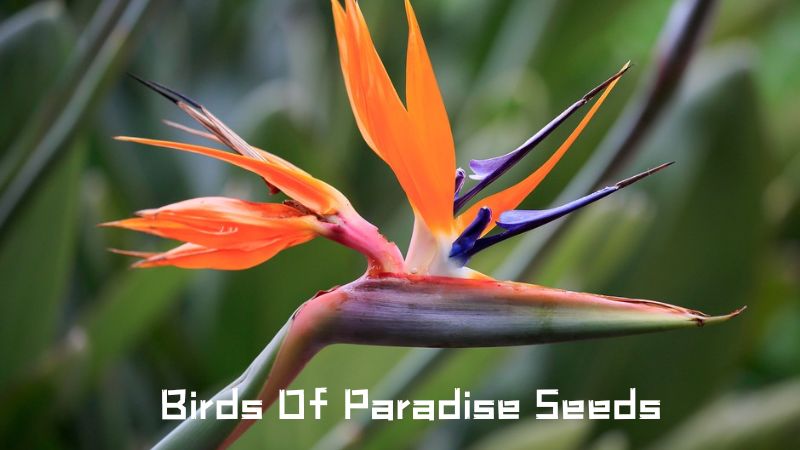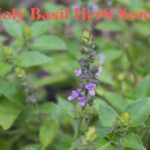Birds of paradise seeds are a unique and beautiful ornamental plant, originating from South Africa. The plant is known for its bright flowers, which look like birds of paradise in flight. Growing and caring for this plant is not too complicated if you master the basic knowledge about them. In this article, Garden Creatives will guide you how to effectively plant and care for bird of paradise seeds.
Origin of Birds of Paradise Seeds
Origin and Geographic Distribution
Bird of paradise seed, also known as Strelitzia reginae, is native to the southern region of Africa, specifically South Africa. This plant is most commonly found in coastal regions and tropical areas, where the climate is warm and humid.
History and Names
Strelitzia reginae was discovered in the 18th century and was quickly brought to Europe, where it became a popular ornamental plant. The tree is named after Queen Charlotte of Mecklenburg-Strelitz, wife of King George III of England. The name “bird of paradise” comes from the special shape of the flower, which looks like a flying bird with colorful feathers.
Diffusion and Application
Thanks to its majestic and unique beauty, the bird of paradise tree has quickly spread throughout the world and become a popular ornamental plant in many countries. Nowadays, we can see the bird of paradise plant grown in botanical gardens, parks, and in personal gardens. This plant is not only grown for ornamental purposes but is also used in the cut flower industry, especially in artistic bouquets and event decorations.
Ecological Conditions
The bird of paradise plant grows best in tropical and subtropical climates, with ideal temperatures ranging from 20-30°C. They prefer direct sunlight or light shade, and need well-drained soil. The plant is also quite drought tolerant but needs regular watering to maintain best growth.
Role in Culture and Arts
In South African folklore, the bird of paradise tree is considered a symbol of freedom and wild natural beauty. The tree’s flowers often appear in works of art, poetry, and music, expressing love and respect for nature.
Benefits of Bird of Paradise Seeds
Landscape Decoration: With its elegant beauty, the bird of paradise tree is a great choice for decorating gardens, balconies, or even indoors.
Air Filter: Like many other ornamental plants, the bird of paradise plant also has the ability to filter the air, helping your living space become fresher.
Create a Highlight: The plant’s unique flowers will create an impressive highlight for any space.
How to Plant Birds of Paradise Seeds
Preparing the Seeds
Choosing to Buy Seeds: First, make sure you buy seeds from a reputable source to ensure a high germination rate. Quality seeds will be free from pests and diseases and will germinate well.
Soak Seeds: Soak seeds in warm water for about 24 hours before planting. This helps soften the hard outer shell of the seed, promoting germination. For better results, you can change the water several times during the soaking process.
Prepare Soil for Planting
Choose Soil Type: The ideal soil type for bird of paradise plants is loose, well-drained, and nutrient-rich soil. You can mix garden soil with sand, compost or compost to create a suitable soil mixture.
Soil pH: Soil should have a pH of 6.0 to 7.5. You can test the pH of your soil using soil pH measuring kits available on the market.
Drills
Prepare the Planting Pot: Choose a pot with drainage holes to avoid waterlogging. Pour the prepared soil into the pot, leaving about 2-3 cm from the top of the pot to avoid soil overflowing when watering.
Sowing Seeds: Sow the seeds about 1-2 cm deep into the soil. Keep the distance between seeds about 10-15 cm if planting in the same pot or bed. After sowing the seeds, cover them with a thin layer of soil and gently compact the soil to ensure good seed-to-soil contact.
Watering: After sowing the seeds, water gently to ensure the soil is moist. Avoid over-watering immediately after sowing because the seeds may be washed away or waterlogged.
Caring for Seeds After Sowing
Light: Place the pot in a place with plenty of sunlight but avoid direct sunlight, especially during the seed germination stage. You can use a shade net or place the pot in a slightly shaded area.
Watering: Water regularly to keep the soil moist but do not let the soil get too wet. Check the soil moisture by touching the soil surface. If it feels dry, water more.
Temperature: Ensure the ambient temperature is between 20-30°C. Avoid placing the pot in a place with strong drafts or very cold temperatures.
Caring for Seedlings
Transferring to a Pot: When the seedling is about 10-15 cm tall and has at least 2-3 true leaves, you can transfer the plant to a larger pot or into the garden. At this time, be careful not to damage the roots of young plants.
Watering: Continue watering regularly, keeping the soil moist but not waterlogged. In the dry season, increase watering to ensure the plant does not lack water.
Fertilizer: Apply organic fertilizer or liquid fertilizer once a month to provide enough nutrients for the plant. During the flowering stage, potassium fertilizer can be increased to help flowers bloom beautifully and last longer.
Pest Control
Check Regularly: Regularly check plants to detect early signs of pests. Common pests that can attack bird of paradise plants include aphids, thrips and spider mites.
Prevention Measures: If pests are detected, use organic control measures such as insecticidal soap, neem oil, or if necessary, use chemical pesticides according to instructions.
Pruning and Maintenance
Pruning: Regularly prune wilted leaves and flowers to stimulate new blooms and keep the plant healthy. Pruning also helps the tree develop a more beautiful and neat shape.
Maintain Hygiene: Clean up fallen leaves and flowers around the base of the tree to avoid creating a favorable environment for pests to grow.
Harvesting and Storing Seeds
Harvesting Seeds: After the flowers fade, the tree will produce fruits containing seeds. Harvest the seeds when the fruit is ripe and dry.
Seed Storage: Seeds need to be stored in a cool, dry place to maintain best germination for the next planting.
Conclude
Birds of paradise seeds are a great choice for those who love ornamental plants and want to bring unique beauty to their living space. Planting and caring for plants is not too difficult if you master the basic steps. Try growing birds of paradise seeds plants and experience the amazing beauty they provide!





